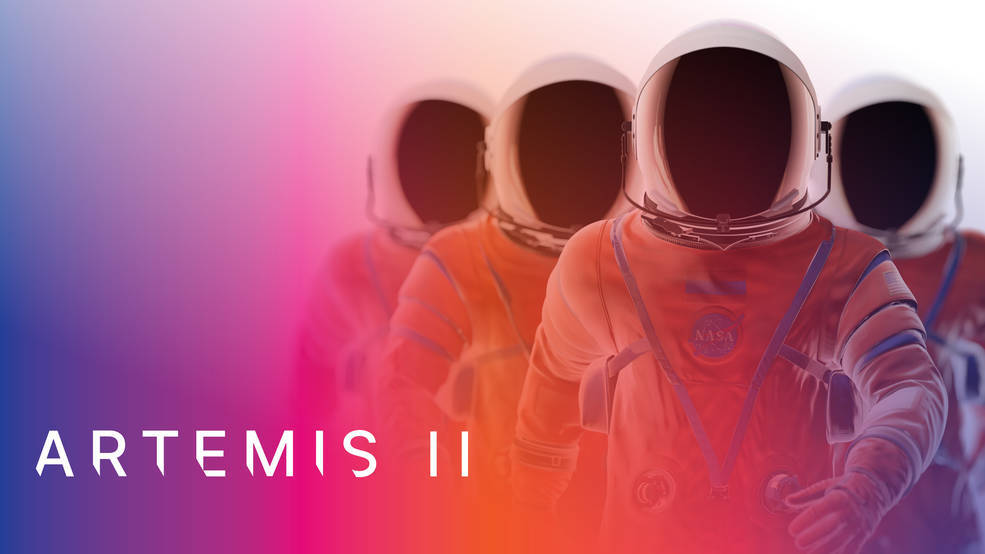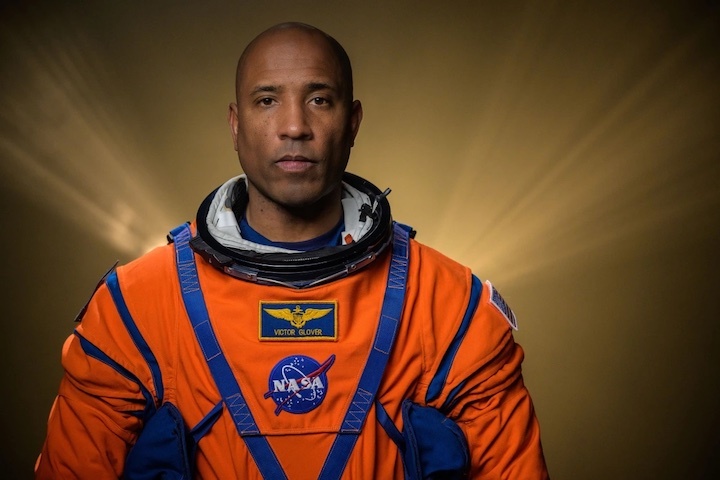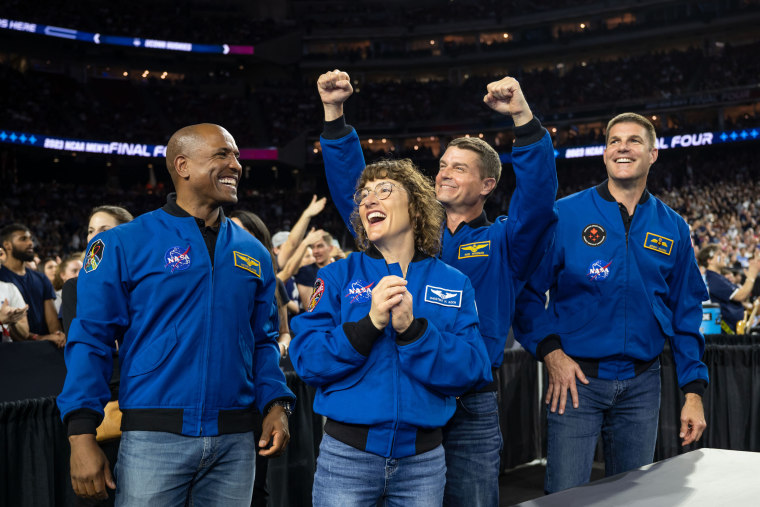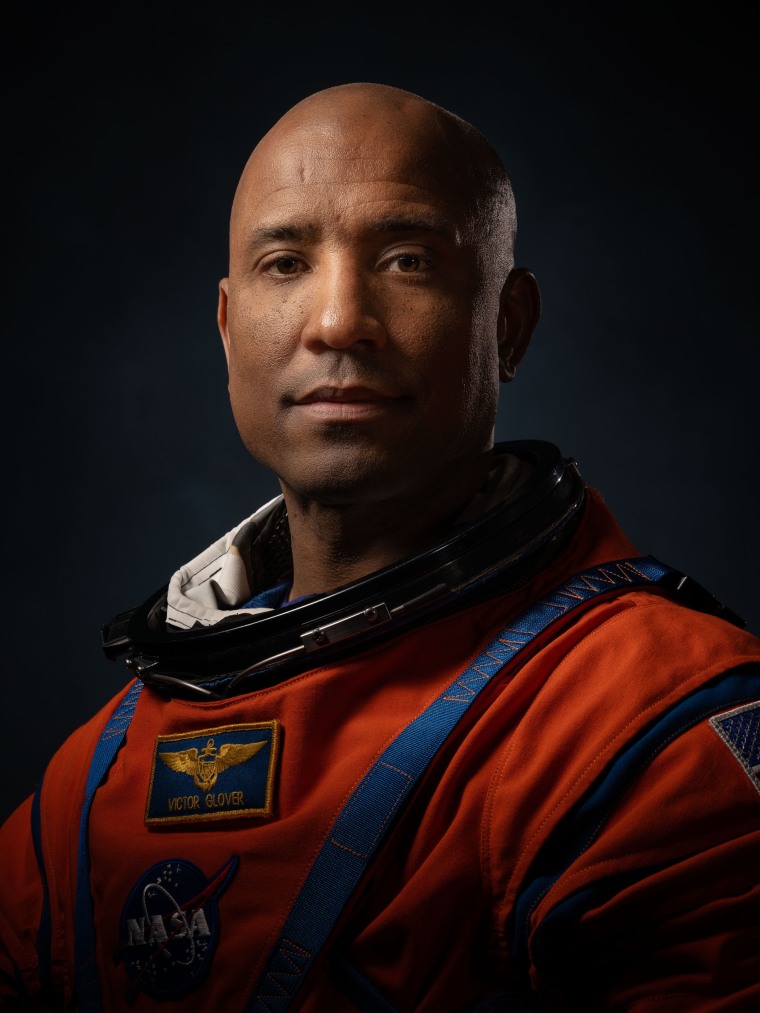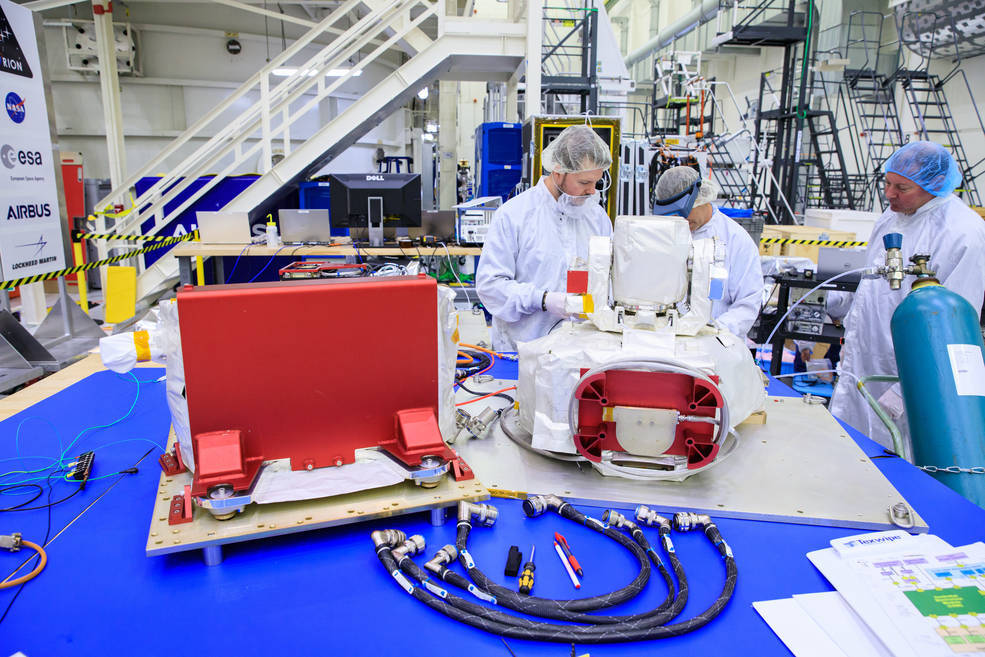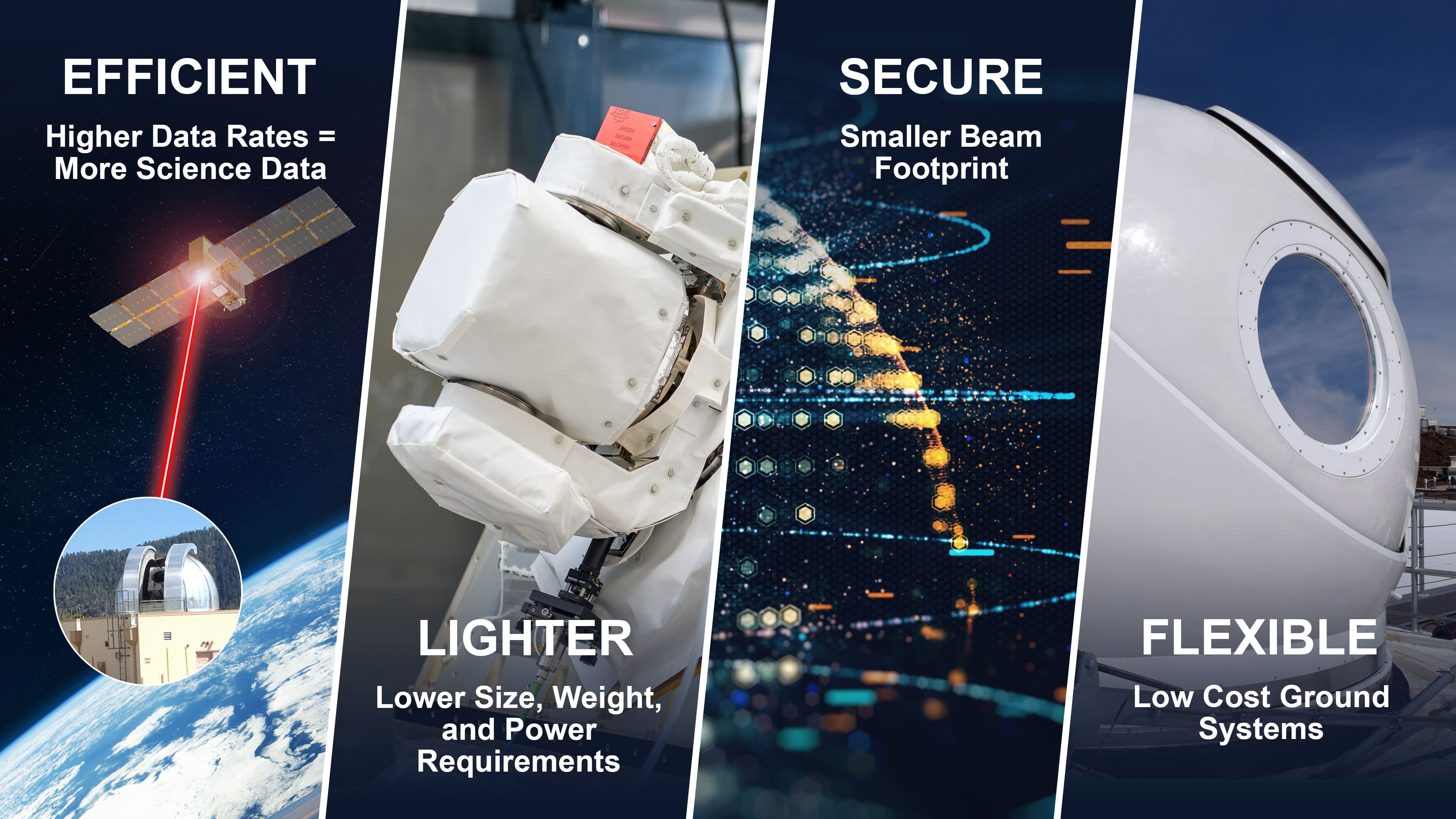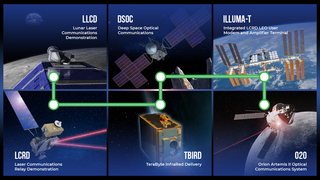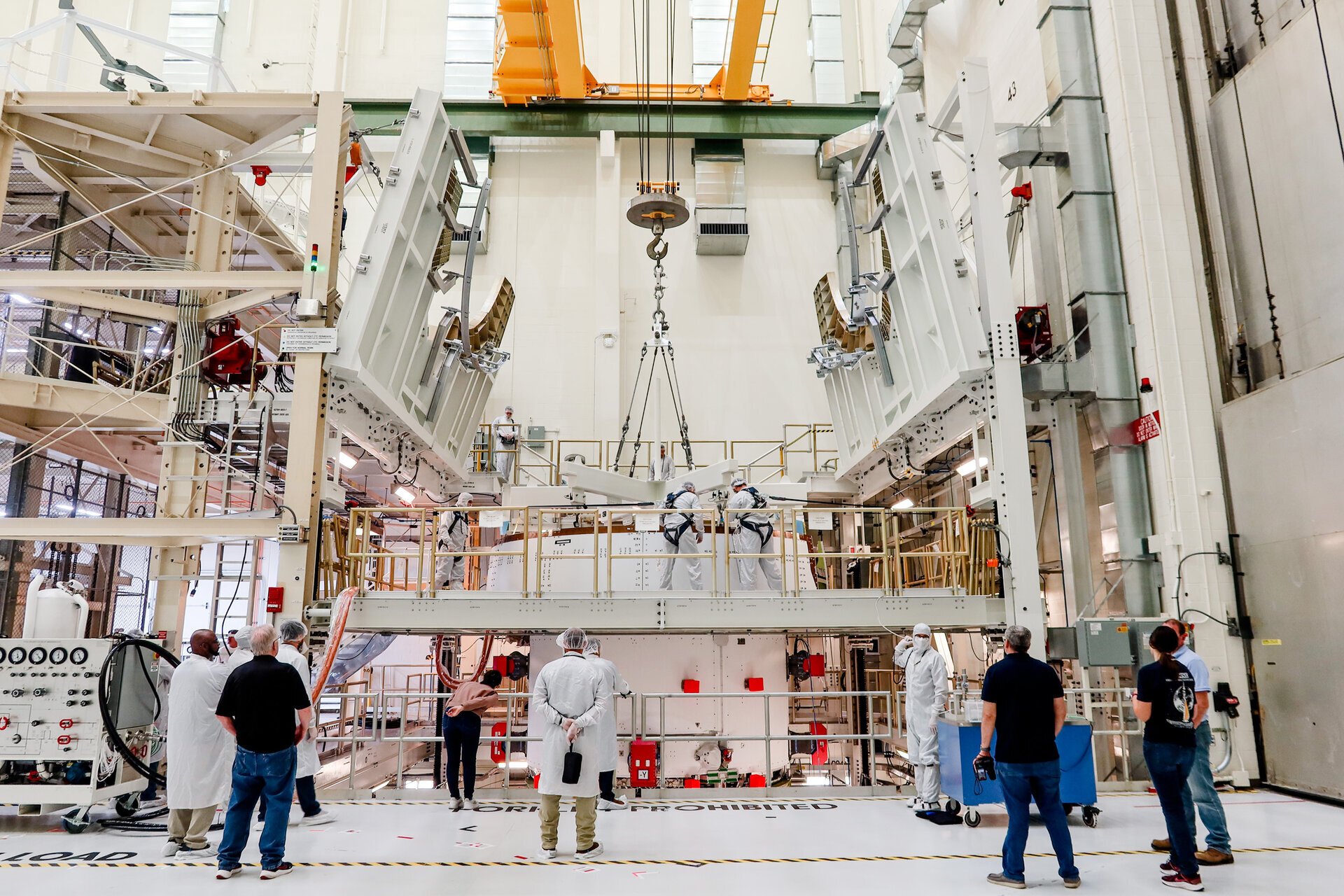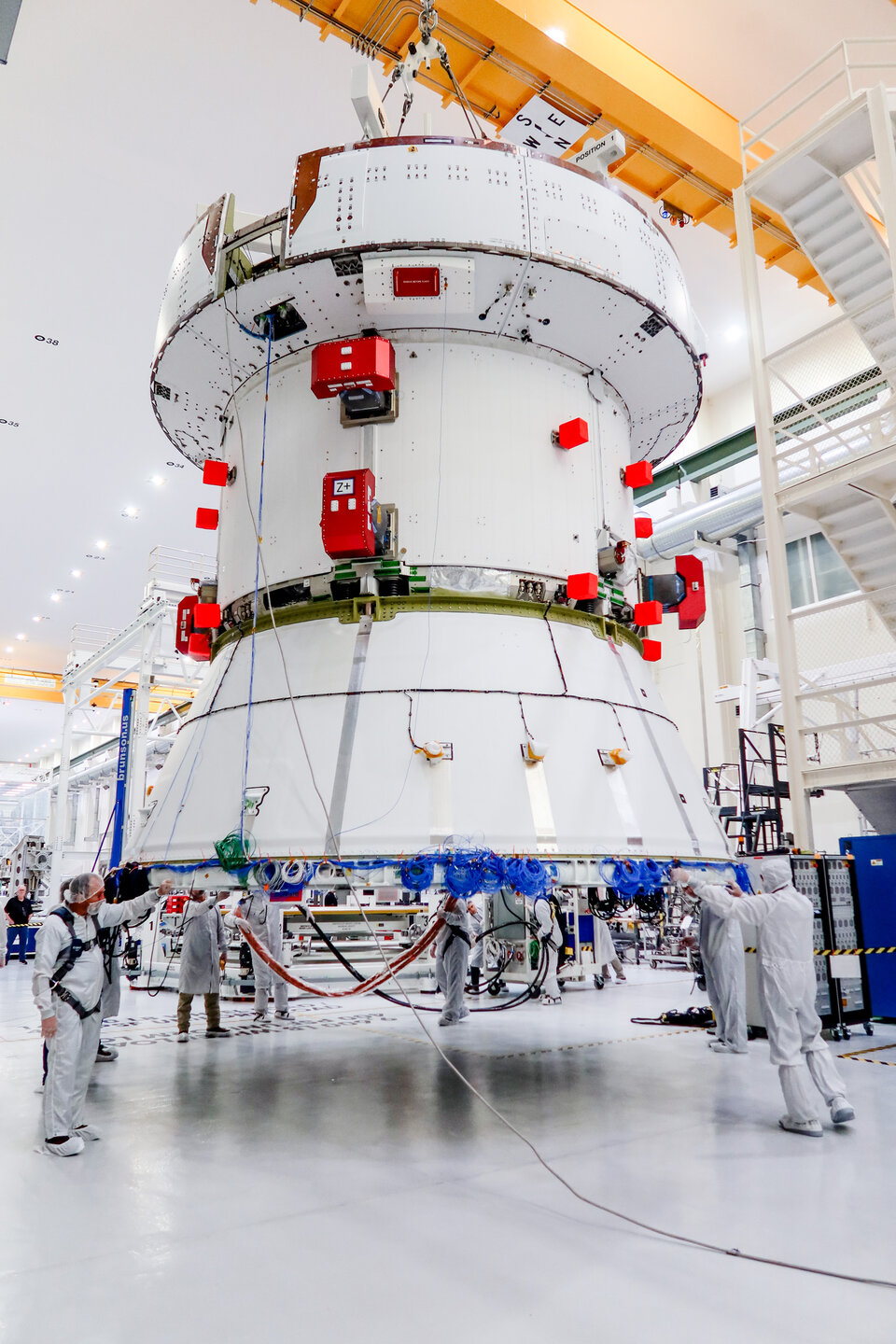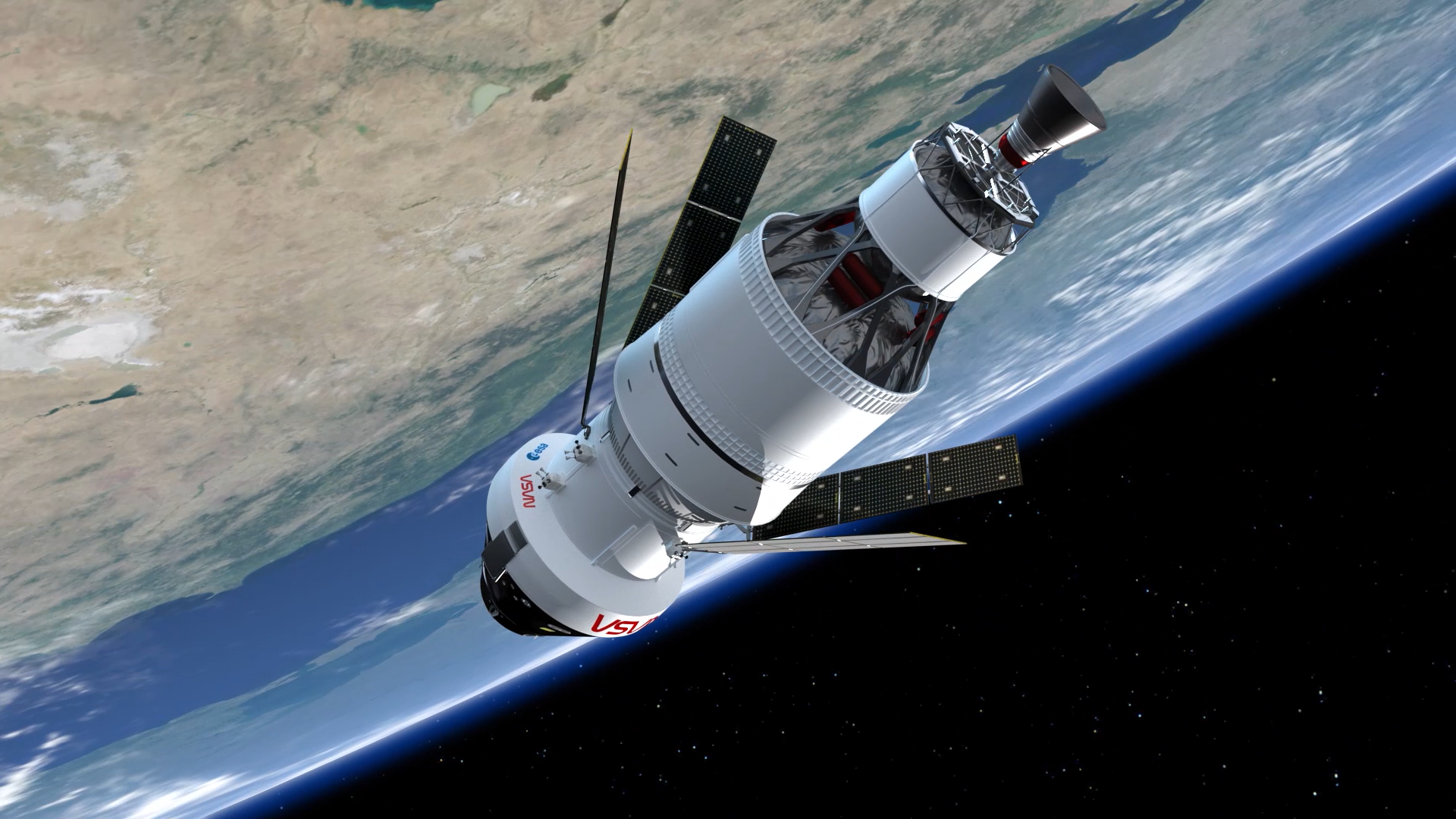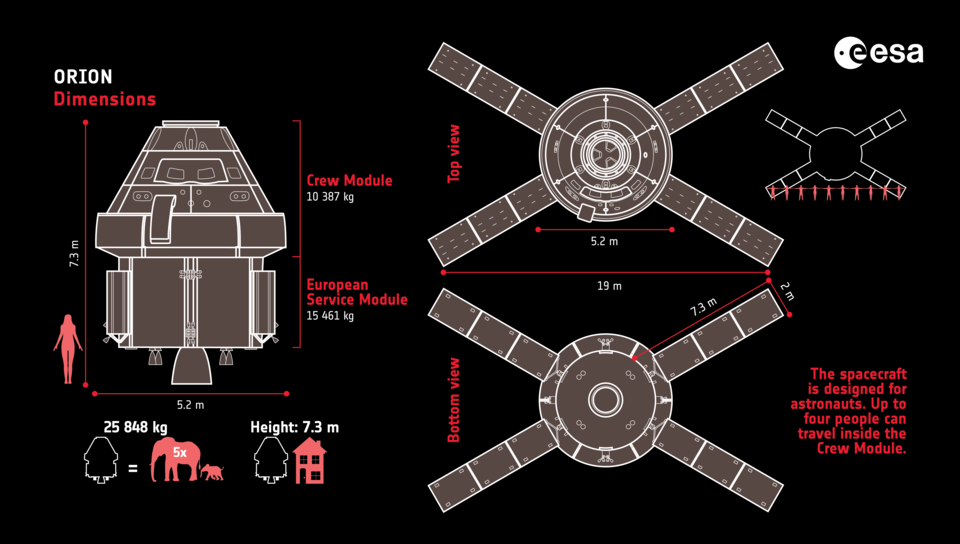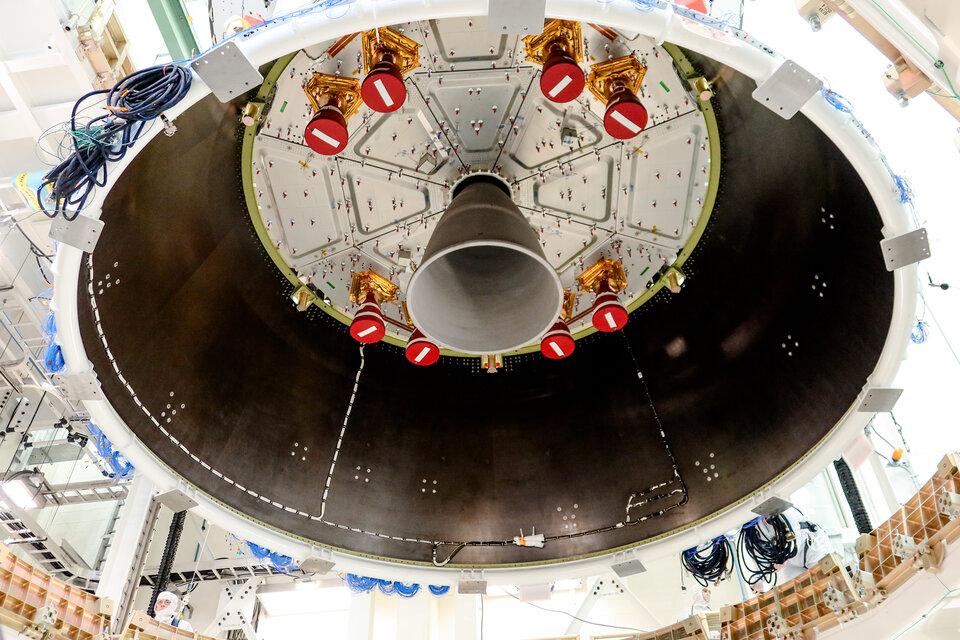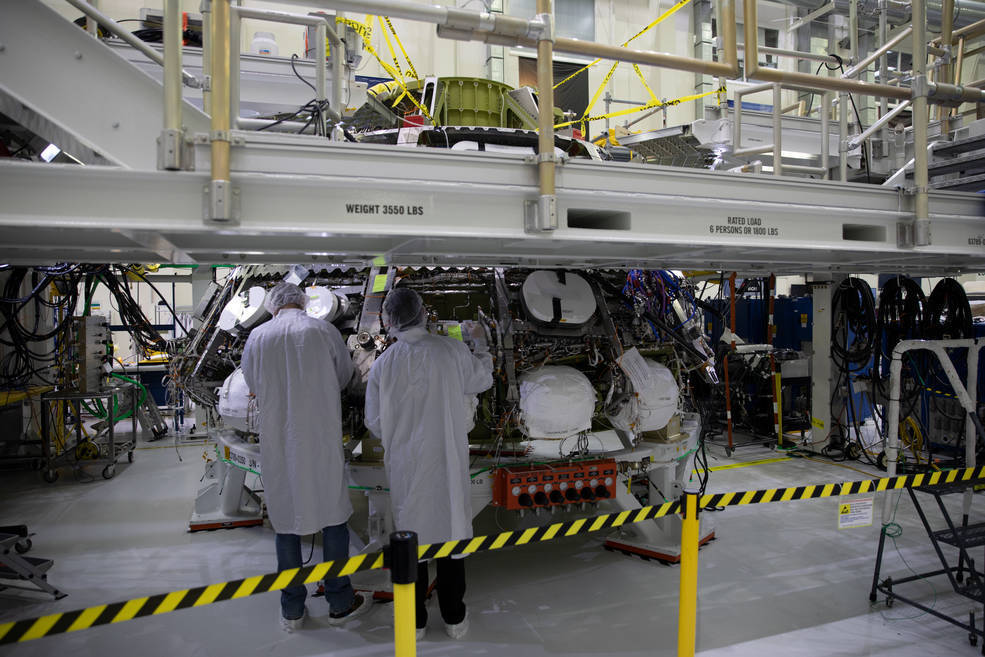Media are invited to view NASA’s Orion spacecraft for upcoming Artemis missions at the agency’s Kennedy Space Center in Florida later this summer.
Engineers are in different phases of assembling and outfitting Orions for Artemis II through IV inside the Neil Armstrong Operations and Checkout Building at NASA Kennedy. Subject matter experts will be available for interviews.
A specific date for the event will be determined as engineers refine production schedules. Attendance for this event is open to U.S. and international media, and space is limited. Media must apply by 5 p.m. EDT Sunday, June 25, at:
Credentialed media will receive a confirmation email upon approval. For questions about accreditation, please email ksc-media-accreditat@mail.nasa.gov. For other questions, please contact Kennedy’s newsroom: 321-867-2468.
Through Artemis missions, NASA will use innovative technologies to explore more of the lunar surface than ever before and collaborate with commercial and international partners. Then, we will use what we learn on and around the Moon to take the next giant leap: sending the first astronauts to Mars.
'American leadership makes space for a country like Canada to shine, and bring our genius.'
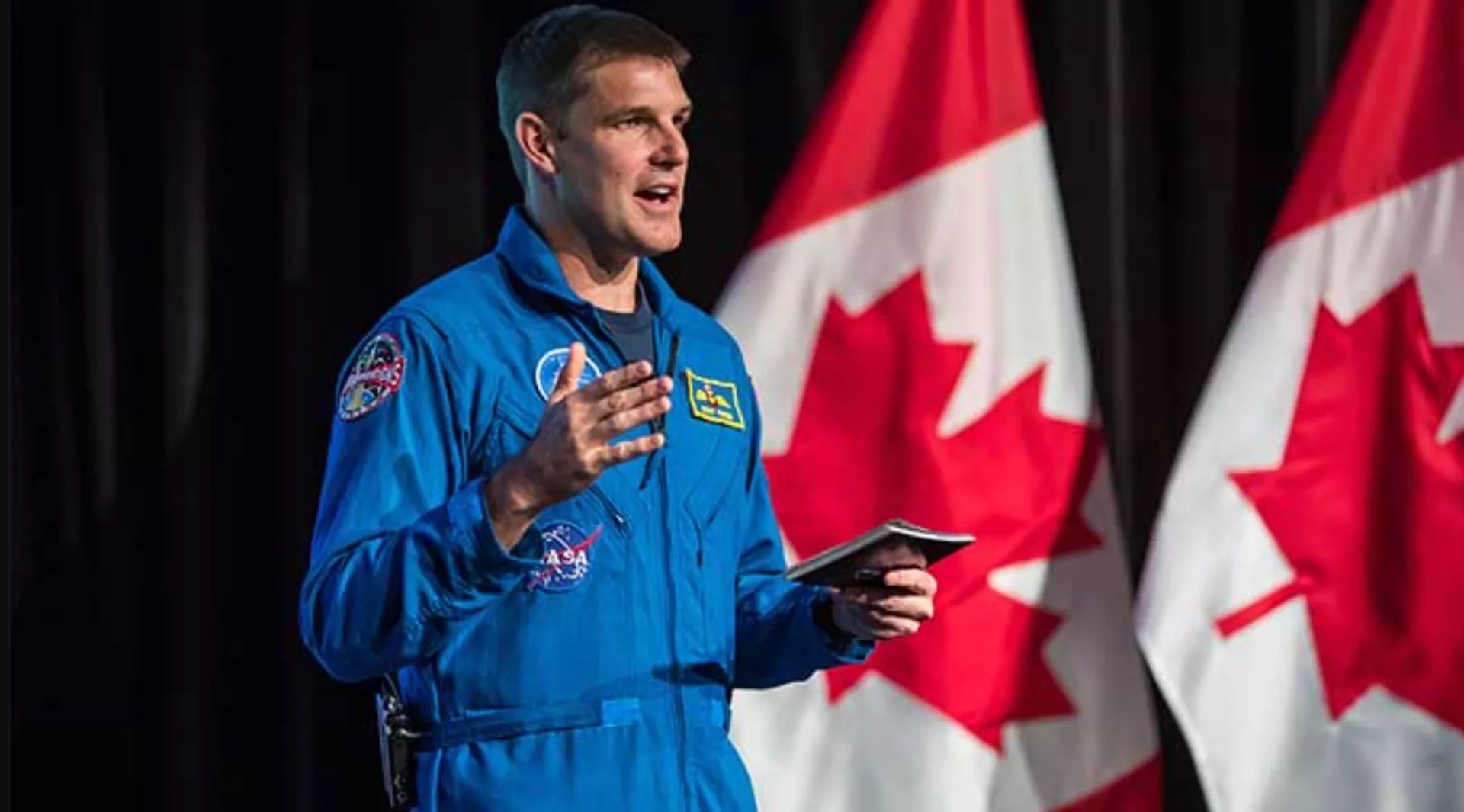
Artemis 2 moon astronaut Jeremy Hansen, of the Canadian Space Agency, speaks in front of two Canadian flags. (Image credit: Canadian Space Agency)
Canada's Artemis 2 astronaut says his country is just getting started in lunar realms with his round-the-moon mission.
Jeremy Hansen was named Canada's representative on Artemis 2 on April 3, and within days the experienced test pilot found himself exploring new worlds as a result: speaking with Stephen Colbert, walking the red carpet at Guardians of the Galaxy Vol. 3, participating in an Indigenous vision quest, visiting policy-makers in Canada and the U.S., and carrying the flag at the coronation of Charles III.
After this work to connect with numerous communities touched by space, the Artemis 2 crew officially began training on May 15, studying the control systems and computers of the Orion spacecraft and other technical matters.
In a few months, however the training timeline "gets a little fuzzy" as this will be the first moon crew in a half-century. The crew is awaiting direction, as well as development of simulators and procedures, from senior management. "For developmental missions, that's to be expected," Hansen told Space.com in an exclusive interview.
But there are a few things Hansen is sure about for himself and his three crewmates, all NASA astronauts: commander Reid Wiseman, mission specialist Christina Koch, and pilot Victor Glover.
There will be geology training to prepare for looking at moon craters, potentially with Canadian crater expert Gordon Osinski — with whom Hansen recently discovered a rare Earth crater on a previous expedition. There also will be continued conversations with Canadian and American policy-makers to chart out the path after Artemis 2, Hansen emphasized.
"Eventually, you'll see us doing amazing science and deep space," Hansen said. "You'll see a Canadian walk on the moon someday, and eventually go to Mars, because we have that ability to to do it in a way that brings benefits to Canadians."
The Canadian Space Agency (CSA) has suggested that Canada will have seats on Artemis 4 and 6, which are both planned moon-landing missions slated to run around the end of the decade.
CSA's director of space exploration development, Martin Bergeron, disclosed those early stage discussions at the Canadian Lunar Workshop in late May, according to SpaceQ. (The first landing mission, Artemis 3, may be in 2025 or 2026.)
Hansen has been with the CSA since 2009 and has not yet been granted a seat, as Canada's International Space Station (ISS) contribution of 2.3 percent generally allows for a mission only every half decade or so. (Canada's Chris Hadfield flew in 2012-13 on a mission assigned before Hansen was qualified for space, and then fellow 2009 astronaut class member David Saint-Jacques flew in 2018-19.)
But Hansen is known in the space community for helming high-profile projects, such as managing the training schedules of the entire 2017 astronaut class, and playing a lead role in the creation four tricky spacewalks to repair the Alpha Magnetic Spectrometer aboard the ISS.
Many in Canada therefore pegged Hansen as the logical choice to launch on Artemis 2, but he said that was not a sure thing until he received a phone call from CSA president Lisa Campbell about two weeks before the April 3 announcement.
"I've known for a while that was sort of the intent, where we thought things would end up, so I wasn't completely surprised," Hansen said of the assignment. "But on the other hand, you just never know. It depends on when a mission actually is going to end up going, and there's always that uncertainty. We don't decide any further in advance than when we have to, because it just takes away options."
Canada received its seat due to its contribution of Canadarm3, a next generation robotic arm that will service NASA's planned Gateway space station at the moon. Canada has paid for its seats through the Canadarm series since the dawn of the space shuttle program, and recently allocated even more space money for a mini-moon rover, a lunar utility vehicle and further moon research development.
The country, which has about 40 million people spread across one of the biggest land spaces in the world, uses its small space budget to make strategic bets meant to pay off big. Robotics is one area, with space medicine, space food and artificial intelligence also seen as key investments for Canadian government.
Hansen emphasized this coalition work with NASA is important, not only for space opportunities but for the applications for remote environments on Earth.
"I'm really proud of this enormous team. I get to be the face of it for this mission, but it really reflects back on a huge team of people that made this possible," Hansen said. "It's Canada on the world stage. American leadership makes space for a country like Canada to shine, and bring our genius."
Indeed, Canadians collaborated with NASA on moon exploration long before CSA was formed in March 1989. For example: A few dozen engineers of the cancelled Avro Arrow, a supersonic plane project, joined NASA in key roles as the agency was preparing human moon missions in the 1960s. Also, Canadian "legs" from company Devtek (today's Héroux-Devtek) were used on the Apollo lunar lander during all human missions.
Quelle: SC
----
Update: 4.07.2023
.
Artemis astronauts spending summer in the classroom training for mission to the moon
June means school is out for the summer for mostly everyone – but not for the astronauts of NASA's first human mission to the moon in over 50 years.
Moon mission school is just getting started.
A roughly 18-month-long training cycle kicked off last week for NASA astronauts Reid Wiseman, Victor Glover, Christina Koch, and the Canadian Space Agency's Jeremy Hansen. The crew will be the first humans to fly aboard NASA's Orion spacecraft atop the agency's 322-foot Space Launch System rocket and the first to head to the moon since 1972.
Before they fly sometime late next year for Artemis II, a 10-day journey around the moon and back, they will cover everything from suit-up to splashdown in the classroom, which in this case also means spacecraft simulators both on land and in the water.
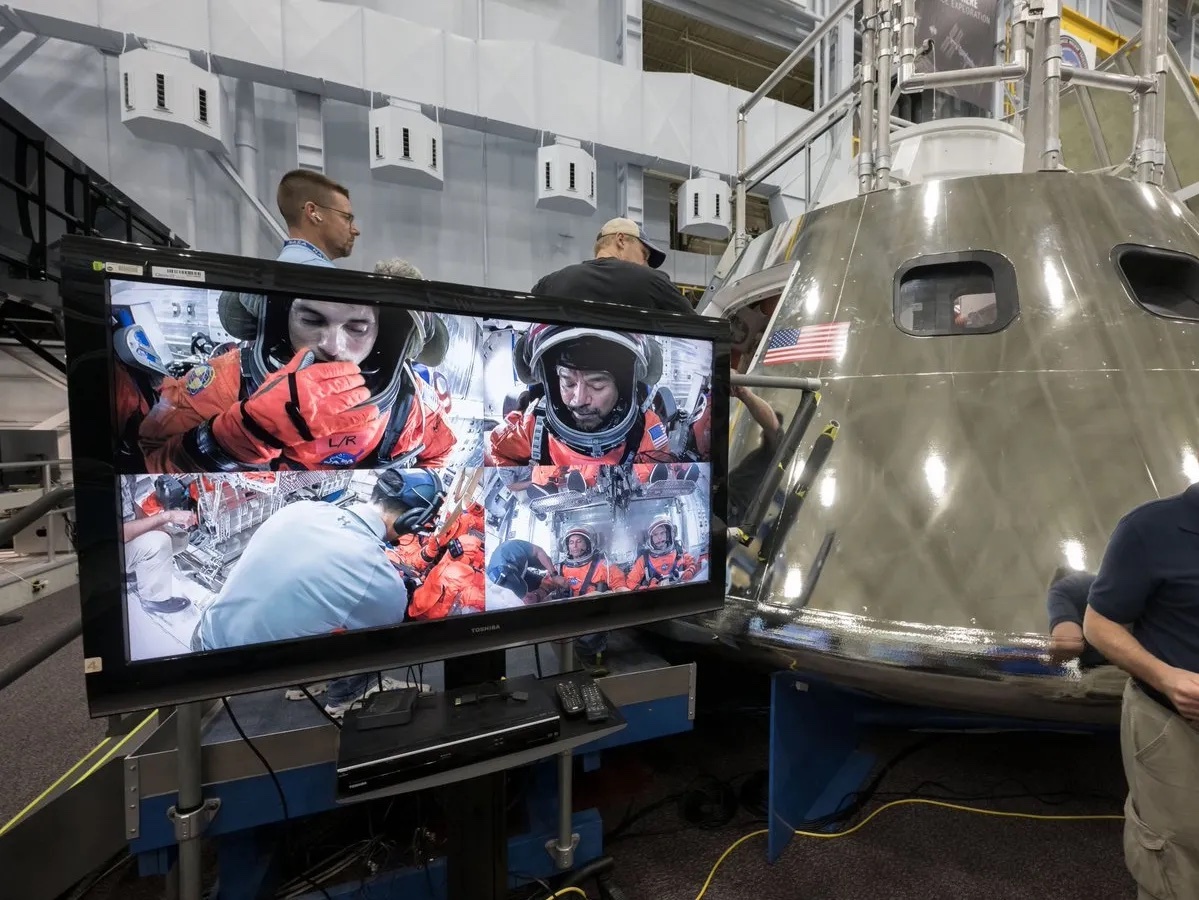
Astronaut training for NASA's crewed Artemis II mission to the moon got underway in June at the agency's Johnson Space Center in Houston, Texas.
The first portion of the training will focus on familiarizing the crew with the different phases and milestones of their mission. They'll train mostly in classrooms in Houston, Texas, and get to understand what's required for human spaceflight to, around, and back from the moon.
"The majority of the crew’s training will take place at Johnson Space Center, where we have an Orion simulator and a mockup of the crew module to help the crew understand placement and orientation of what’s inside, and at Kennedy Space Center in Florida, where rocket and spacecraft hardware will come together and launch countdown activities occur," Jacki Mahaffey, NASA's lead training officer for the Artemis II crew, said in a release.
In the fall, they'll get to know their spacecraft and rocket inside and out. This also goes for the ground support and mission control teams that must know every phase of the mission, as well as what can be done for the crew should anything unexpected happen in flight.
"Since this is the first time we’ll train crew for Artemis missions, Reid, Victor, Christina, and Jeremy are going to be integral to helping us refine future training requirements, as well," Mahaffey said.
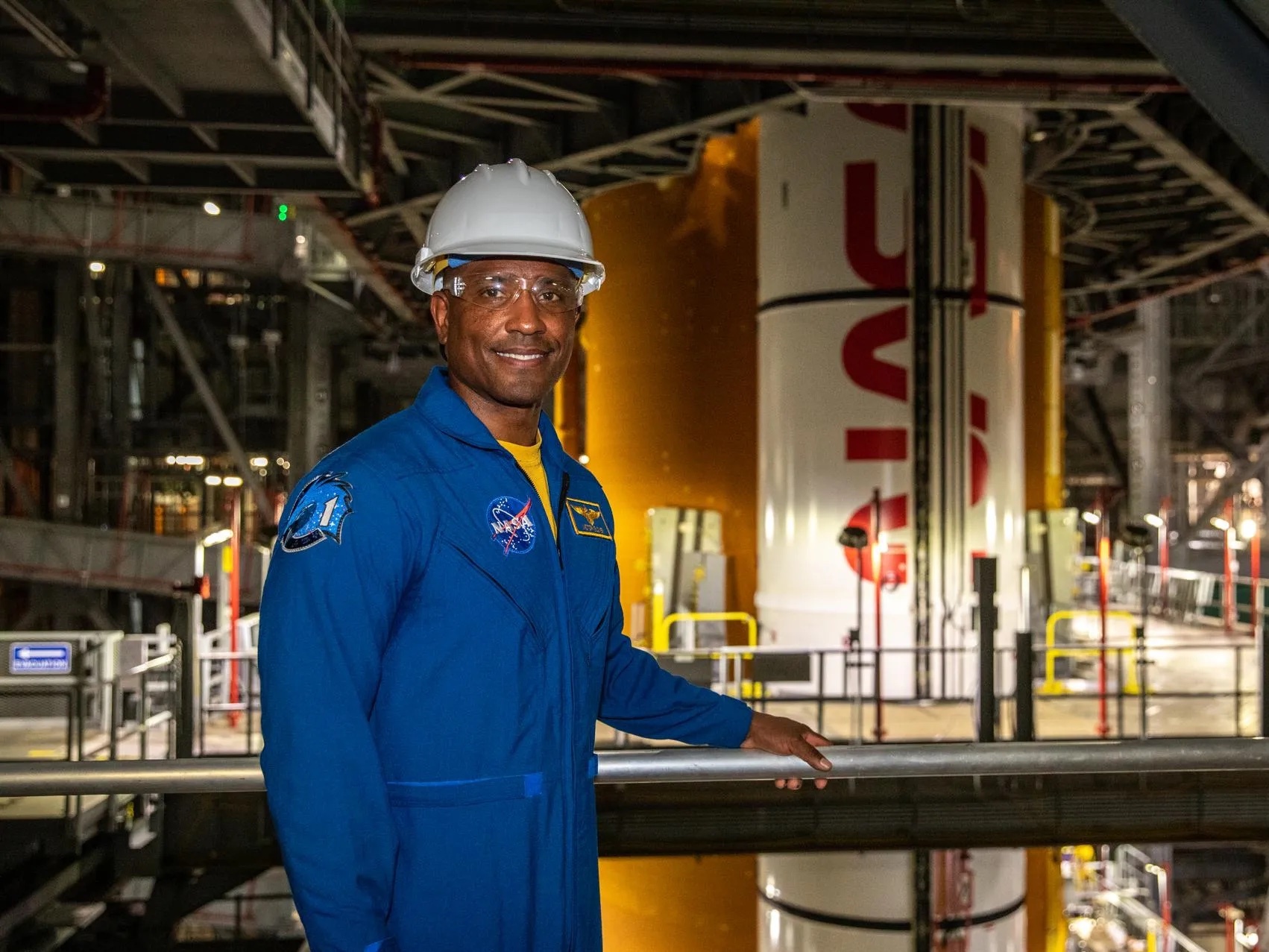
NASA astronauts Reid Wiseman, Victor Glover, and Christina Koch are joined by Canadian Space Agency astronaut Jeremy Hansen.
Some of that valuable information was gained with last year's uncrewed Artemis I mission, a 25-day demonstration flight that served as a proving ground for the agency's capability to return humans to lunar orbit. The next time an Orion capsule launches, however, instead of data-gathering mannequins, it will be four humans hitching a ride that need to come home safely.
Earlier this month, teams from Exploration Ground Systems at KSC traveled to Houston to lead a training for ground crew at JSC. Focused on getting the crew into and out of the Orion capsule, the team worked on launch day procedures with astronaut candidates that donned recognizable orange space suits. Together they also worked on how to quickly evacuate the crew from the capsule in case of an emergency.
"Throughout their training flow, the crew also will refine their understanding of water survival and emergency exit operations, practice medical and exercise device use, and learn how to use Orion’s other day-to-day life support systems including for food preparation," the agency said in a release.
Artemis II is a critical step in NASA's series of lunar-focused missions that could one day serve as a pathway for human spaceflight to Mars.
With the Artemis moon-to-Mars plans, NASA intends to first establish a base at the lunar south pole and a small space station in lunar orbit. The goal is to gain experience and knowledge about living and working in deep space in a sustainable way before reaching farther into the solar system.
If all goes well and budgets remain stable, Artemis III will take two astronauts down to the lunar surface using a SpaceX-provided lander – a modified version of Starship – sometime before 2030.
Quelle: Florida Today


